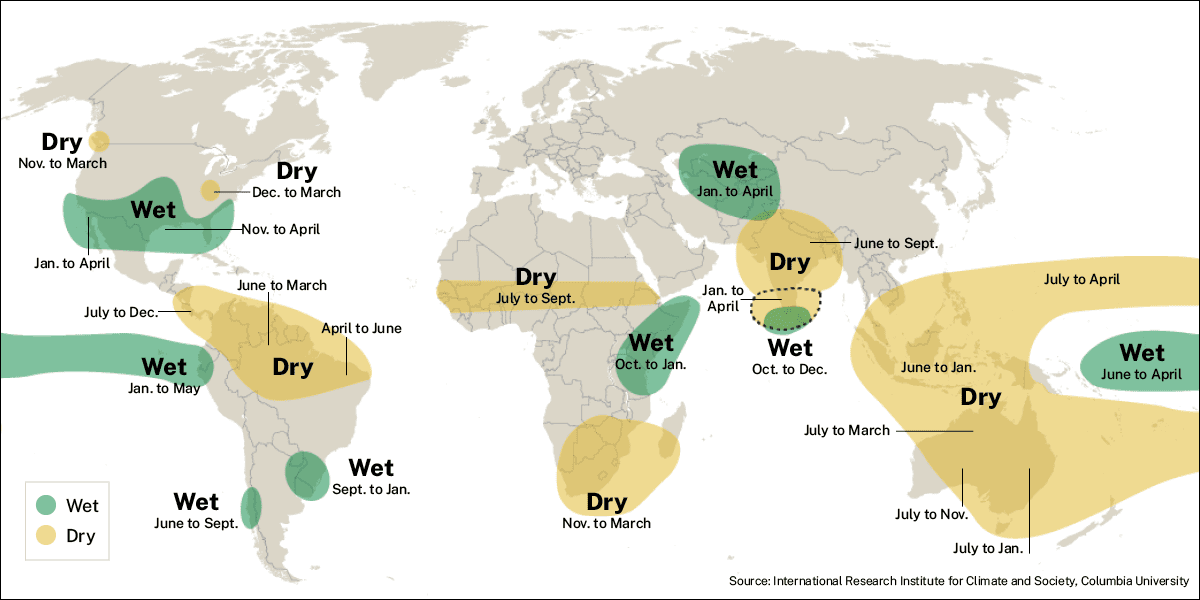
The Effects of El Niño in 2024
After three years of cooling provided by the La Niña weather pattern, El Niño has returned and is estimated to remain dominant throughout the first half of 2024. With it, the UN’s World Meteorological Organization (WMO) has warned that rising temperatures and shifting weather patterns brought on by this change can threaten industry and agriculture in many regions around the world.
El Niño is a global climate event that is commonly responsible for increasing temperatures and worsening extreme weather events. It is caused by ocean temperatures and winds in the Pacific that shift from cooling to warming, transitioning from La Niña and into El Niño.

In the United States, El Niño causes drier and warmer weather in the north while causing widespread and intense rainfall in the south. The weather pattern also increases the frequency and intensity of hurricanes in the Gulf of Mexico, which can damage agriculture in growing regions such as Florida, Mexico, and the Caribbean.
In Europe, El Niño often brings colder and drier winters to northern territories, whereas southern Europe experiences warmer and wetter climates.
In Indonesia and Australia, El Niño is known for increasing the length and intensity of dry conditions, causing droughts and wildfires in high-risk regions. El Niño also reduces the overall rainfall in India and South Africa, which has a particularly large effect on India’s Monsoon season.
While all these shifts in temperature and rainfall are gradual, they can have a major impact on the world’s overall weather conditions – before 2023, the hottest year on record was 2016, which coincided with the shift from La Niña to El Niño. As of early November, the National Oceanic and Atmospheric Administration confirmed that 2023 has broken the previous record and will become the new hottest year.

All of these factors place 2024 on-track to be one of the hottest years on record yet again, with heatwaves and droughts made worse by the various weather conditions brought about by El Niño. Even as the transition began in October 2023, the world experienced record-breaking temperatures and historic droughts in key waterways including the Panama Canal.
Berjé will continue to monitor weather conditions in key growing regions throughout the world, providing at-source updates on our products as they become available.
See all info of:





